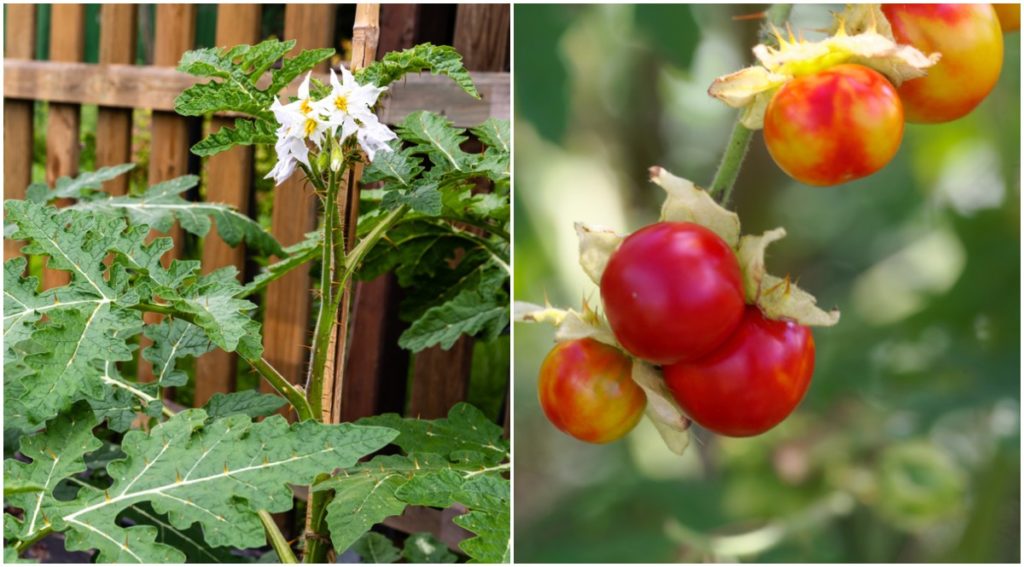
Nature really is a mad scientist.
Take the litchi tomato as a prime example of a smattering of weird and wonderful traits, all in one plant.
With its deeply lobed green leaves, sprawling habit, and clusters of small red fruits, at first glance litchi tomato could be easily mistaken for a typical cherry tomato plant.
But upon closer inspection, the foliage of litchi tomato is covered all over in prickly spines like a cactus.
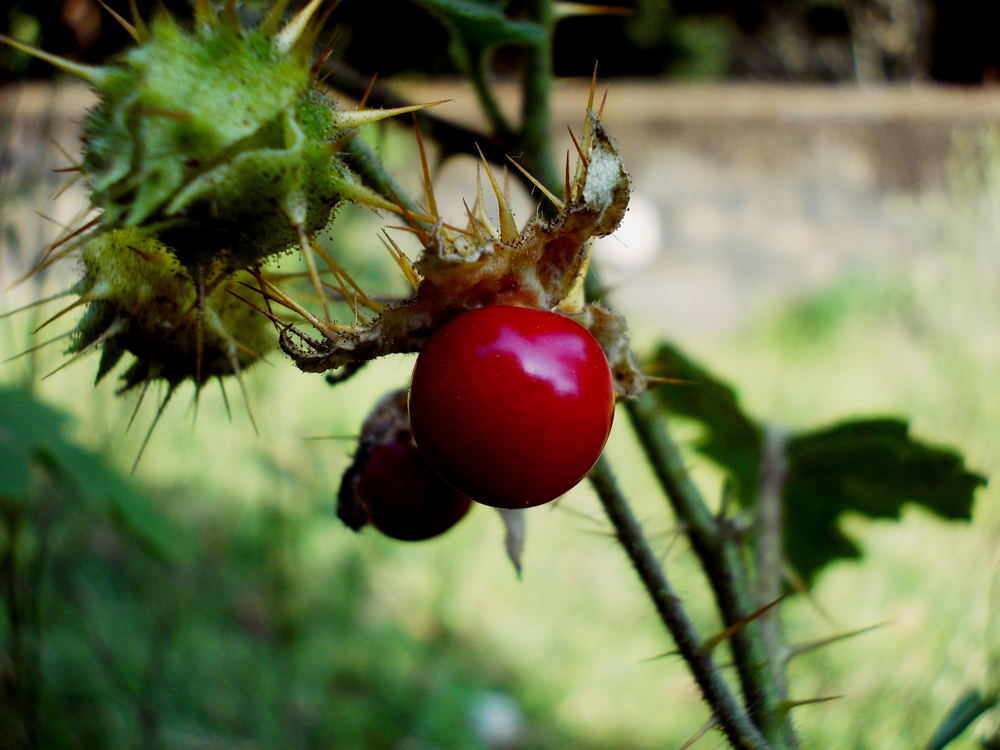
The fruits are enclosed in tiny husks like tomatillos.
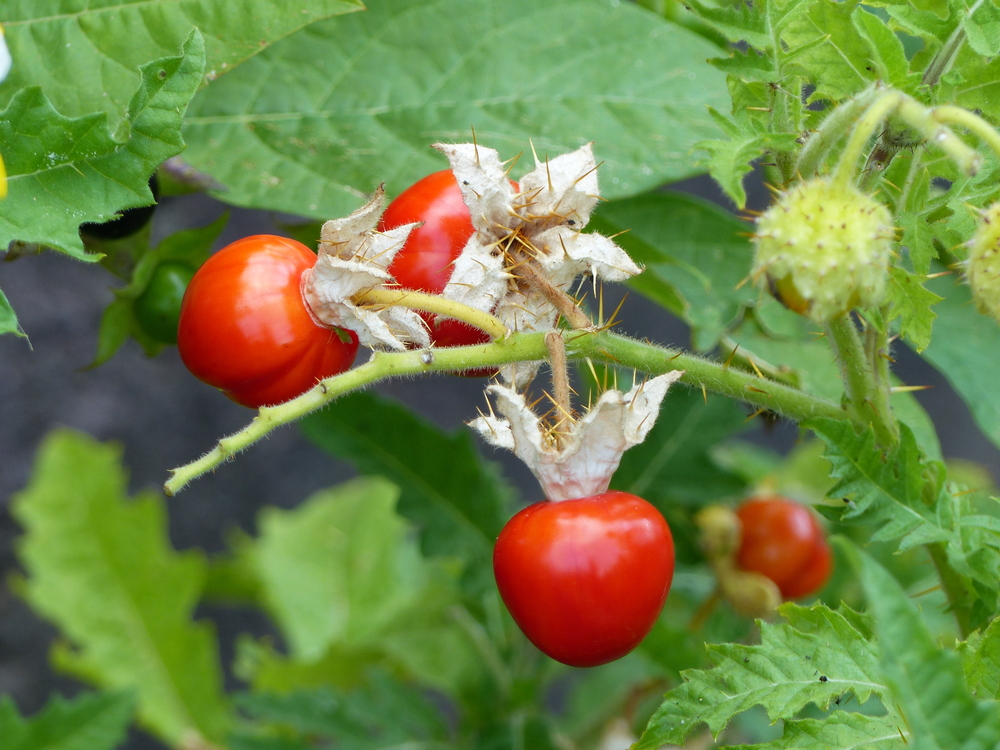
The large and fluffy flowers are more like something you would see on a squash plant.
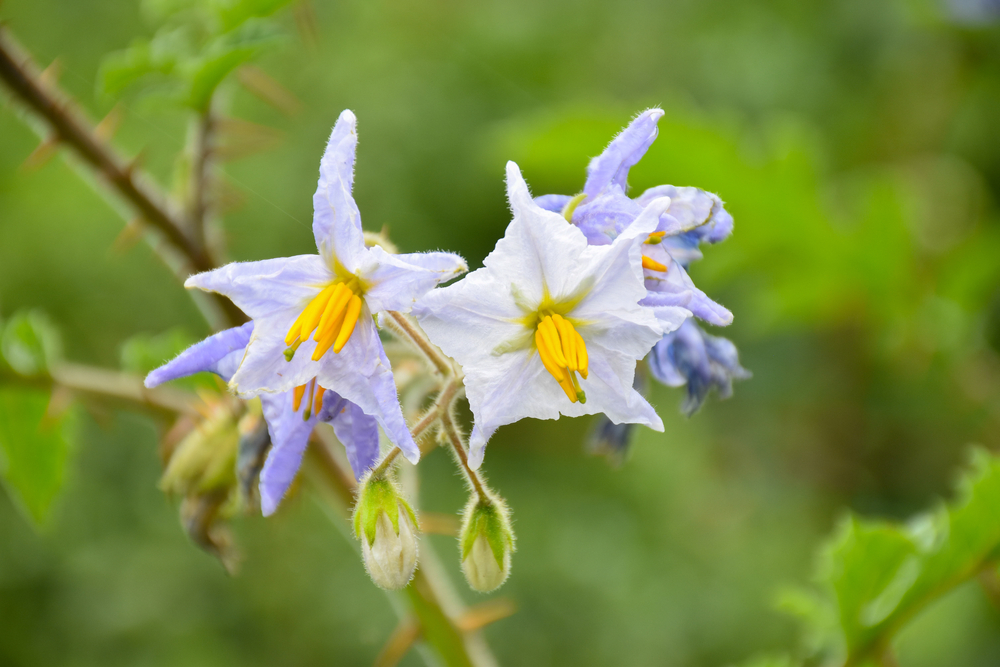
Litchi tomato fruits are red on the outside, but when sliced open they reveal a velvety yellow interior. Pop one in your mouth and its seedy innards have a mouthfeel like raspberries.
The flavor of litchi tomatoes is often described as a slightly tart cherry with a subtle hint of tomato. Though some find it has a fruitier taste that crosses apple, pear, kiwi, and watermelon. Others say it is more like creamy and sweet ground cherries mixed with tomato.
About Litchi Tomatoes
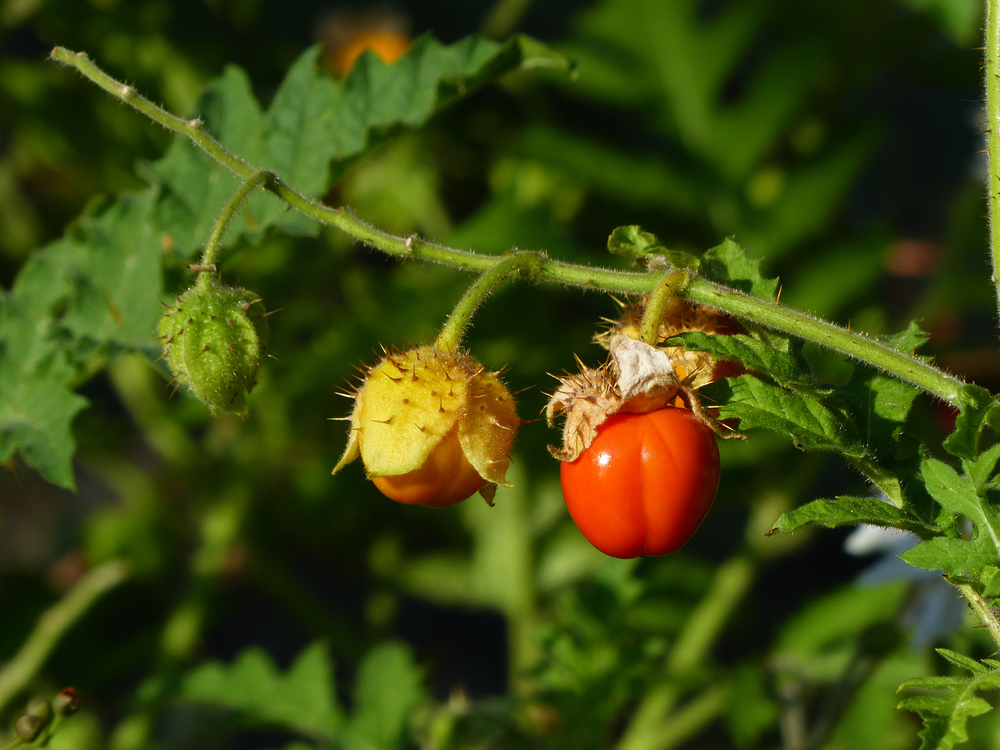
Solanum sisymbriifolium goes by many names: litchi tomato, sticky nightshade, vila-vila, red buffalo-bur, Morelle de Balbis, and fire-and-ice plant.
It is native to tropical and warm temperate regions of South America where it grows like a weed. The litchi fruits have been an important food staple in indigenous cultures for hundreds of years.
Litchi tomato plants are quite striking in appearance, reaching up to 5 feet tall and wide.
The deeply lobed leaves with toothy margins are attractive, but this plant is most stunning when in bloom.
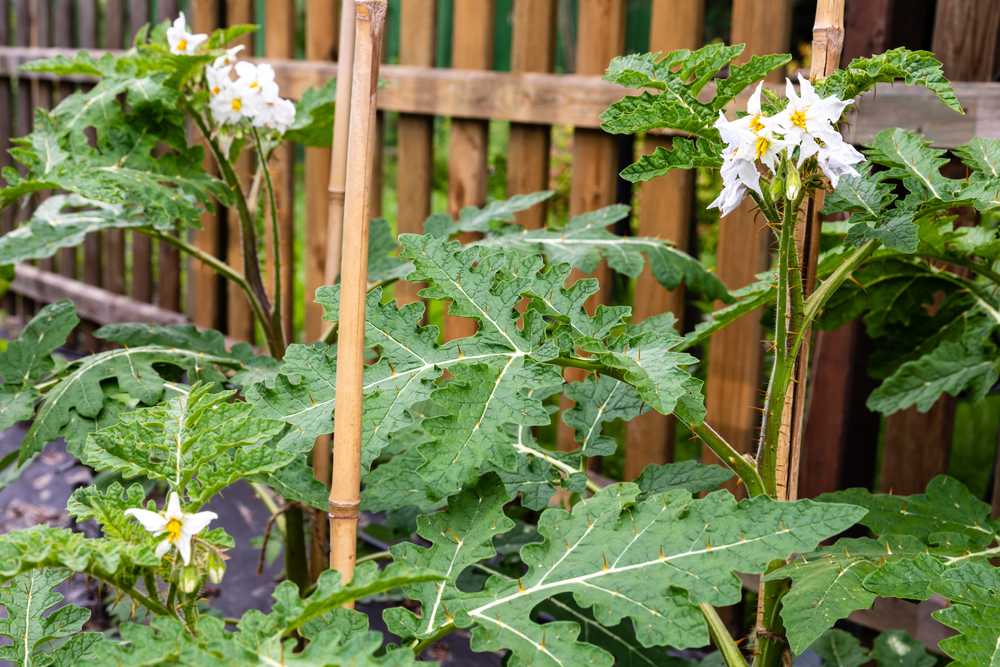
Putting out a profuse display with up to 12 flowers per cluster, each bloom is about 2-inches across with ruffled petals in white or pale purple. Bright yellow anthers grouped in the center give the flowers a beaked appearance.
The fruits start off green and turn golden yellow before developing a deep red hue. Litchi tomatoes are long and tapered at first, almost bullet shaped, before plumping up at maturity. The bullet-shaped immature berries are reminiscent of lychee seeds and possibly how litchi tomatoes got its common name.
Sharp thorns, about a half inch in length, are all over the plant, even on the undersides of leaves.
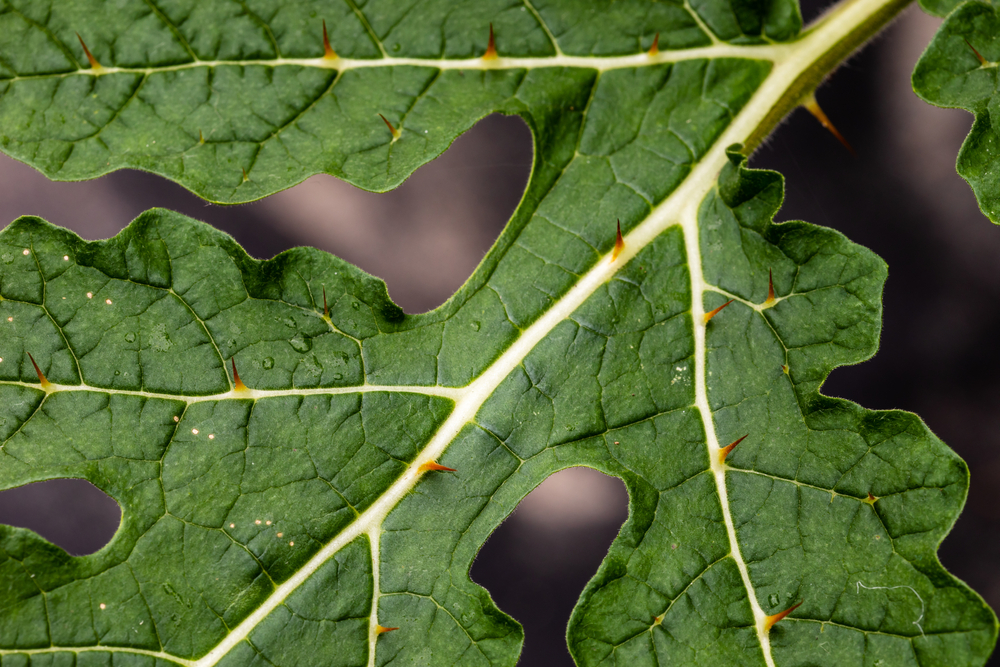
The husks that cover the fruit are prickly as well, but these burst open for easier retrieval as soon as the berry is ripe.
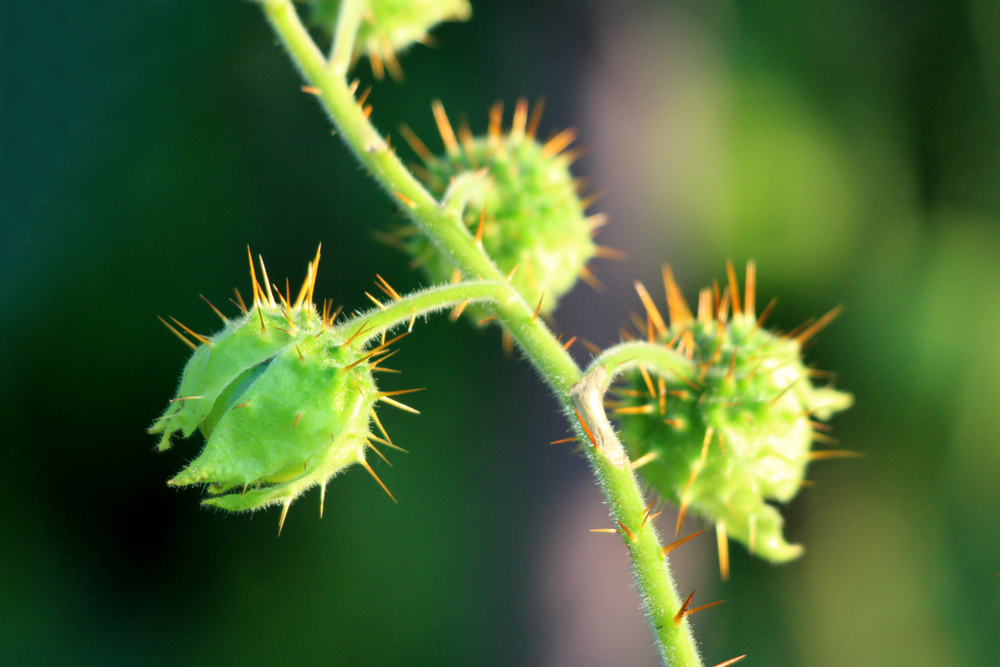
Still, always don the thickest leather gloves and cover up your skin when handling and harvesting this plant.
Though the thorniness of litchi tomatoes can be a nuisance, clever gardeners have used this to their advantage by planting them along the edges of vegetable beds or as ornamental hedgerows. Litchi tomato spines are an excellent deterrent for scavenging animals, large and small.
Litchi Tomato Growing Conditions
Like your garden variety tomatoes, litchi tomatoes love warmth and sunlight.
Hardiness
Litchi tomato is a hardy perennial in zones 9 to 11. In other zones, it is grown as an annual.
Unlike tomatoes which are very sensitive to cooler weather, litchi tomatoes are remarkably tolerant to light frosts and can survive dips as low as 25°F (-4°C). This is an invaluable trait for northern gardeners who can squeeze in a few more harvests before true winter arrives.
Light Requirements
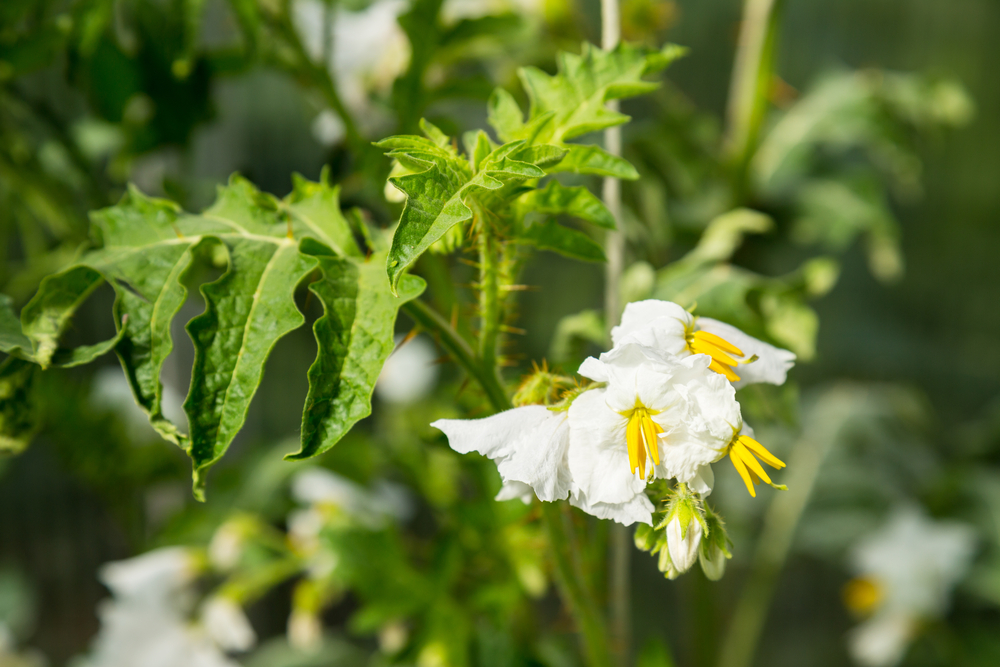
Litchi tomatoes will grow best in full sun but can tolerate some light shade too.
Soil
Although it can adapt to a wide range of soil types and pH, litchi tomatoes prefer moist and sandy soils.
Watering
Keep litchi tomato plants happy and productive by giving them at least 1 inch of water per week.
Fertilizer
Fertilize litchi tomato plants as you would regular tomatoes. As heavy feeders, these plants will benefit from a rich organic fertilizer regularly applied throughout the growing season.
Pruning
Litchi tomatoes will eventually become massive thorny shrubs. Pruning them back regularly will make them so much easier to manage.
Litchi tomatoes have a different sort of growth habit than standard tomatoes.
Flowering shoots emerge from the main stem and are leafless. You can cut back unwanted leafy branches, but try to leave the leafless shoots and suckers on the plant. Otherwise, you won’t get any fruit.
Plant supports
Similarly, using tomato cages and other plant supports can help keep litchi tomatoes somewhat confined.
Pollination
Litchi tomatoes are self-fertile but will produce more fruit when two or more are planted together.
Choosing a site
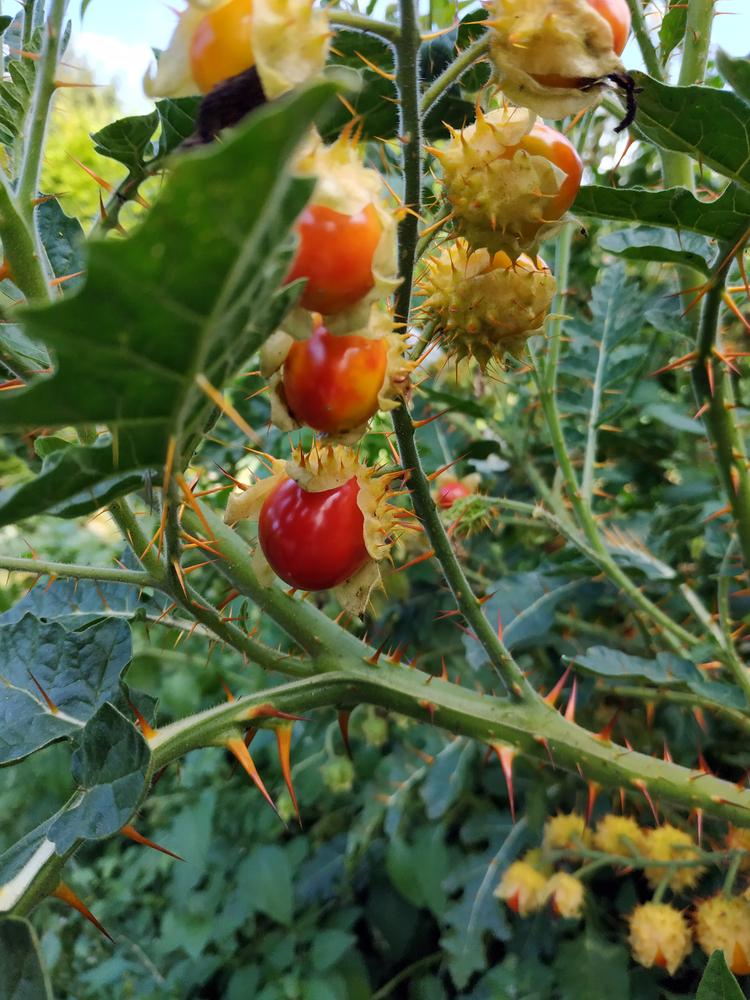
Getting poked by litchi tomato plants can be pretty painful so choose your growing site carefully. It’s a good idea give litchi tomato its own dedicated plot, away from high traffic areas and footpaths.
Where to Buy Litchi Tomato Seeds
Since litchi tomatoes are a unique heirloom variety, you’re not likely to find seeds for sale at garden centers or in seed catalogs.
Local seed libraries and seed swaps are good places to look, as well as these online sellers:
How to Grow Litchi Tomatoes from Seed
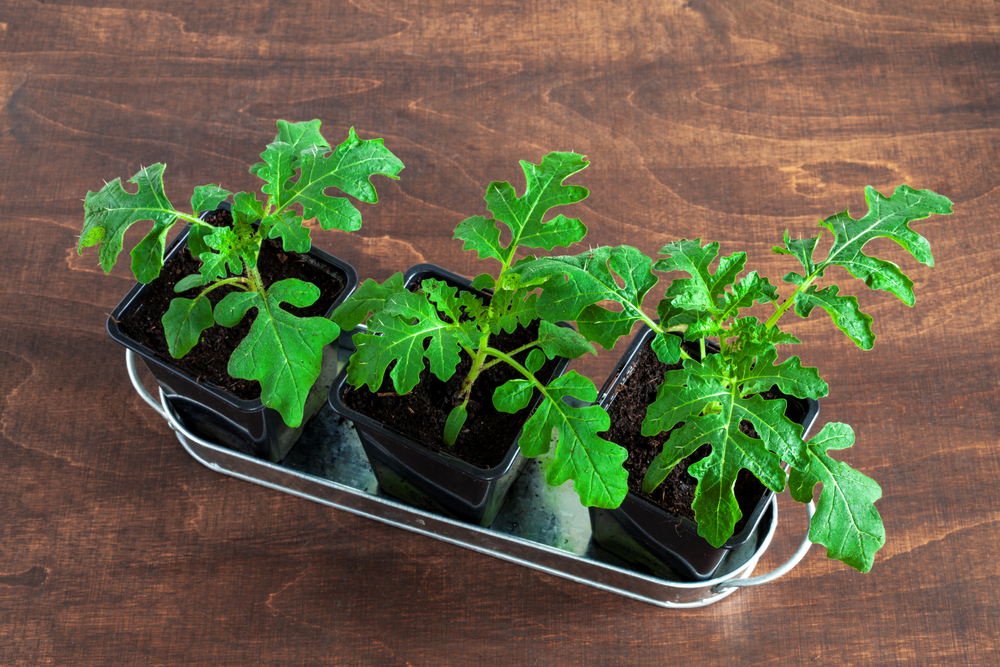
Start litchi tomatoes just as you would peppers and tomatoes.
- Sow litchi tomato seeds indoors 6 to 8 weeks before the last frost date for your area.
- Plant seeds a ¼ inch deep in seed flats or individual pots filled with sterile potting mix.
- Moisten the soil and place flats in a warm spot. Litchi tomatoes will germinate faster when soil temperature is at least 70°F (21°C).
- When seedlings have their first set of true leaves, thin to one plant per pot.
- Litchi tomatoes can be hardened off and transplanted outdoors once all risk of frost has passed and soil temperatures have warmed to 60°F (16°C).
- Plant litchi tomato seedlings at least 3 feet apart.
How to Harvest Litchi Tomatoes
Litchi tomatoes require a long growing season, about 90 days from transplanting outdoors to harvest.
Picking fruits from your litchi tomato plants can be a harrowing experience if you don’t mind the thorns!
Protect yourself by wearing a pair of good quality gloves – like these.
Some folks prefer to keep as far away as possible and pluck fruits from the plant with long kitchen tongs.
Litchi tomatoes are ripe and ready for harvest when the prickly husk pulls away to expose the vibrant red berries.
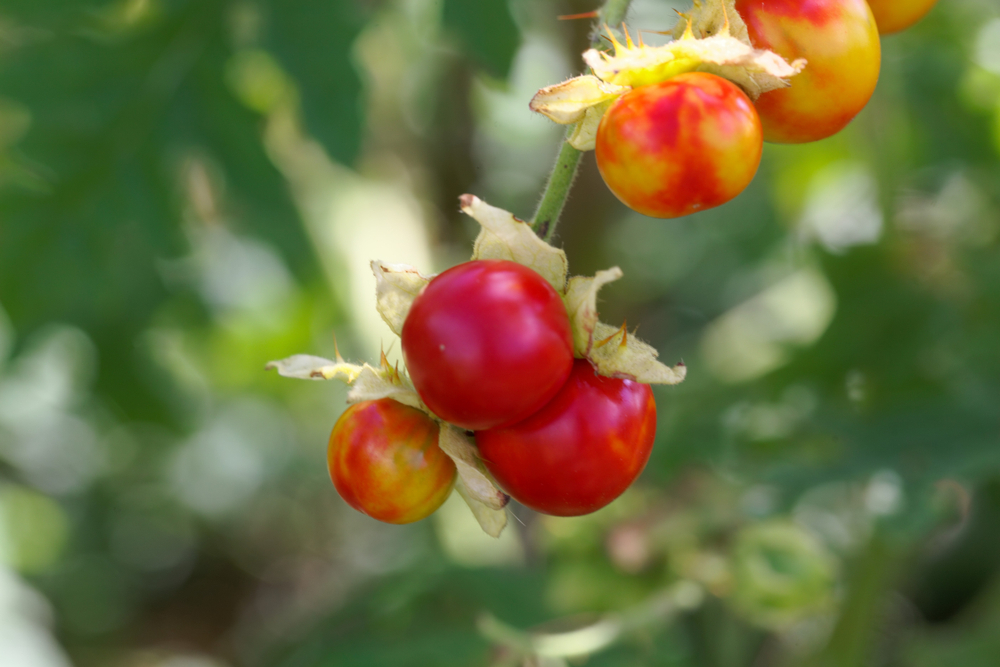
The longer you keep them on the plant, the sweeter they will be. The fruit should release easily from the calyx; if it resists, wait a few more days.
Fruits that have fallen off the plant are a sign of peak ripeness so collect these as well.
Some gardeners report that it will produce fruit more abundantly towards fall as the weather cools. Fruits harvested in cooler weather also tend to be very sweet and have a more fruity taste.
How to Preserve and Store Litchi Tomatoes
Litchi tomatoes placed loosely in a paper bag and put in the fridge should last about a week or so.
Pack litchi tomatoes up whole in an airtight container and pop them in the freezer and they will keep for about a year. Freezing will change the fruit’s texture so it’s best to use these ones for making jams and sauces.
As far as canning litchi tomatoes goes, we’re still very much in unchartered territory. Because litchi tomatoes are such an oddity in North American gardens, there is little information on them regarding canning safety.
The safest course is to treat litchi tomatoes as a low acid fruit.
Many gardeners have had success in canning litchi tomatoes by prepping them into their chosen recipe and adding an acid, such as lemon juice or citric acid.
The rule of thumb is to add 2 tablespoons of bottled lemon juice or a ½ teaspoon of citric acid per quart to lower the pH.
As an added precaution, you can use pH testing strips to determine the acidity level of the fruit. Simply slice open a litchi tomato and press the pH paper firmly to the cut edge.
If the pH value is between 1 and 4.6 you can go ahead with your water bath canning recipe without the need for additives. If the pH value is between 4.6 and 7, add acid or use a pressure canner.
Litchi Tomato Seed Saving
Litchi tomato fruits are positively riddled with tiny flat seeds. These are easy to save year after year by fermenting and drying them in the same manner as tomato seeds.
These plants will readily self-seed too. Any fruits left to rot on the ground will frequently pop back up as volunteers the following spring.
Litchi Tomato Diseases and Pests
Another notable trait of the litchi tomato is its impressive resistance to most pests and disease.
The leaves and stems of the plant contain solasodine, a substance that is highly toxic to attacking fungi and insects.
Pests that chomp on the foliage of litchi tomato plants are affected at all stages of life – decreasing the overall survival of adults and reducing pupation and metamorphosis of larvae raised on the leaves.
Although litchi tomatoes are mostly trouble-free, keep an eye out for tomato hornworms and potato beetles. These two pesky foes appear to be unfazed by the effects of solasodine chemicals.
Litchi Tomato Recipes
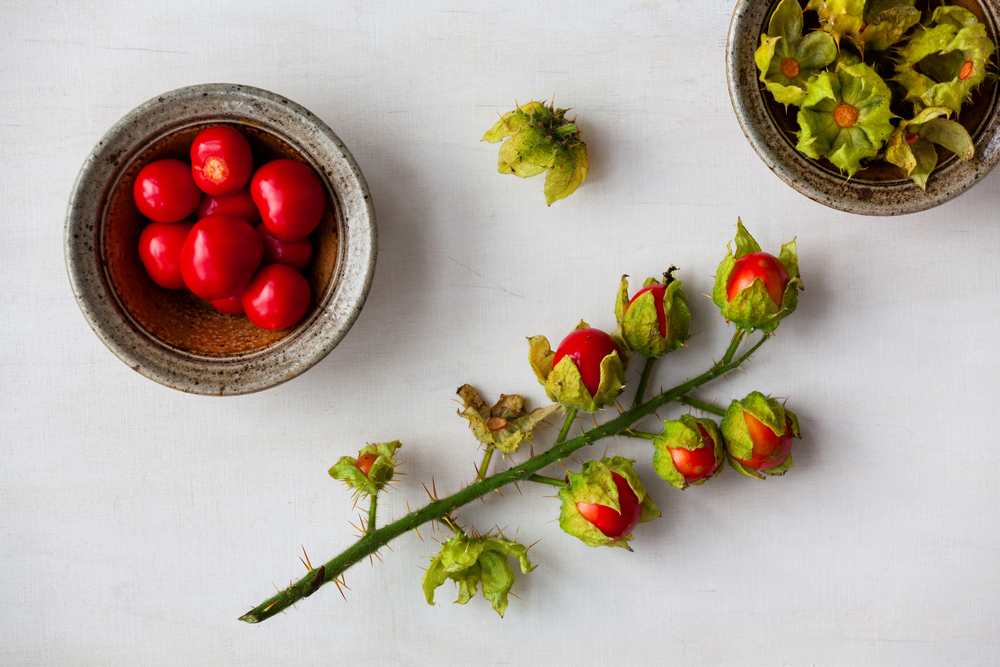
Growing a crop of litchi tomatoes means you’ll need to become a bit of a trail blazer in the culinary department.
This heirloom species isn’t widely grown for its fruit and few ready-made recipes for using them are available.
Here’s one to get you started:
Hot and Spicy Litchi Tomato Chutney – from Mother Earth News
Otherwise, get creative and experiment with this curious fruit. Its sweet and sour qualities mean it can be adapted for any recipe based on tomatoes, cherries, or cranberries.
Think fruit tarts, jams, salsa, pies, sauces, sorbets, preserves, and wines:
- Wild Fermented Salsa
- Quick Picked Green Tomatoes
- Ground Cherry Jam
- Cranberry Orange Cider
- Cherries in Honey Canning Recipe
- Tomato Sorbet
- Tomato Wine

Get the famous Rural Sprout newsletter delivered to your inbox.
Join the 50,000+ gardeners who get timely gardening tutorials, tips and tasks delivered direct to their inbox.

